WBS in Project Management: Build a Clear, Effective Work Breakdown Structure
Estimated reading time : 10 min“Nothing is particularly hard if you divide it into small jobs.” — Henry Ford
Introduction: The WBS essentials in one minute
A WBS in project management (Work Breakdown Structure) turns complexity into organized simplicity. As a visual tool, it breaks the overall objective down into deliverables, then into well-defined, assignable work packages and elementary tasks. Why does this change everything? Because a WBS removes blind spots, makes cost and schedule estimation easier, clarifies responsibilities, and reduces risk. Whether it’s a website, an event, or a product, the WBS becomes your strategic compass.
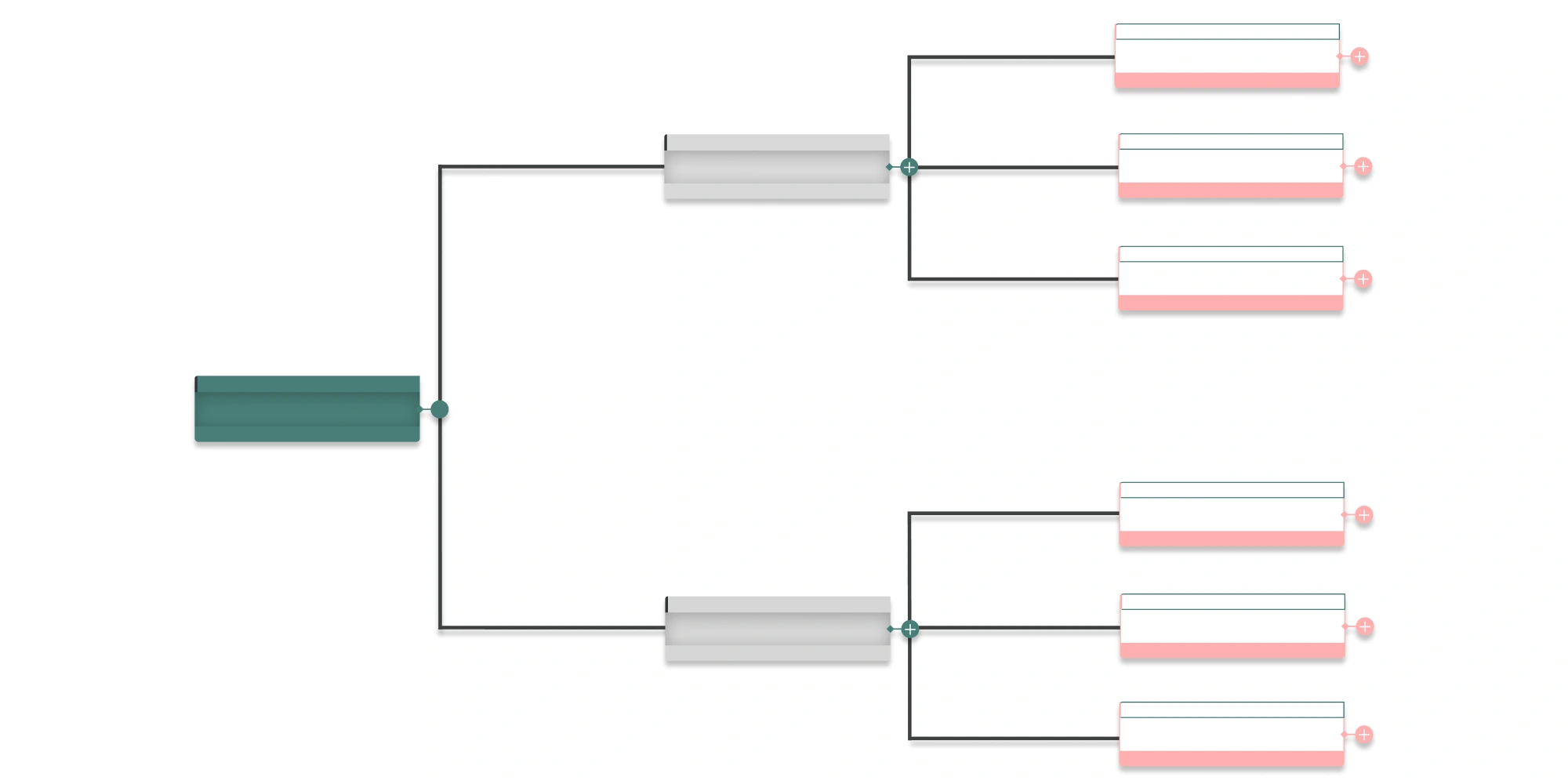
Definition: What is a WBS (Work Breakdown Structure)?
A Work Breakdown Structure (WBS)—or Structure de découpage du projet (SDP) in French—is an essential project management tool that hierarchically decomposes a project into smaller, manageable units of work.
Unlike a Gantt chart, which focuses on when, the WBS focuses on what. It answers “What must be produced?” rather than “When do we do it?”.
This representation provides a clear overview and reduces ambiguity across the project.
The 3 essential levels of a WBS
A WBS relies on a hierarchical decomposition of the project. This structure clarifies the deliverable hierarchy and eases planning. The number and naming of levels can vary by project type and methodology, but three core levels appear in most cases.
- Project objectives: overarching results to achieve the project’s purpose. Each objective should be clear, measurable, and aligned with initial needs.
- Project deliverables: defined during scope definition, these are tangible, measurable, and verifiable results that validate objective achievement and overall success.
- Elementary tasks (work packages): the WBS’s lowest level—actions required to produce a deliverable. They are specific enough to assign a duration, a cost, and an owner.
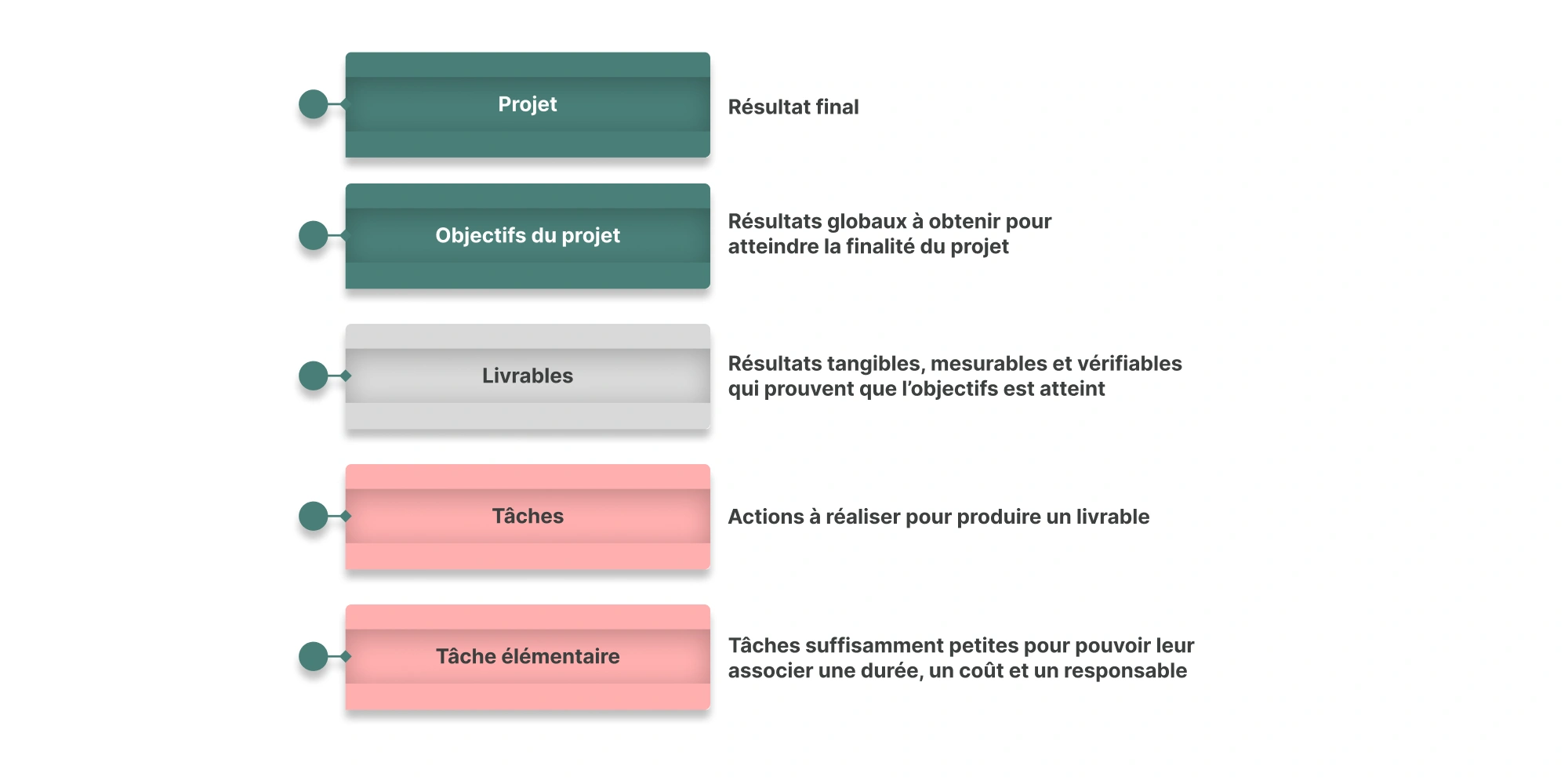
This project hierarchy—objectives, deliverables, tasks, and elementary tasks—forms the basis of a clear, usable WBS. There’s no absolute rule for the number of levels; what matters is that the breakdown remains useful and actionable for estimating costs, schedules, and responsibilities.
In large organizations or cross-functional projects, it can make sense to decompose first by teams or departments before structuring by deliverables. Be careful not to confuse the project structure with the org structure: a WBS is outcome- and deliverable-centric, not a mirror of internal processes.
Documenting the WBS: the WBS dictionary
Documenting a WBS means creating a WBS dictionary. This reference document defines and records, for each WBS element, the following key information:
- An ID number: identifies each element in the hierarchy (e.g., 1, 1.1, 1.2, 1.1.1, 1.2.1…).
- Owner: the person accountable for execution, tracking, and quality.
- Name and description: clear title and context of the task/deliverable.
- Parent and children: hierarchical links that reflect the WBS logic.
For elementary tasks, the dictionary also captures:
- Durations: time estimates (hours, days, person-days), considering each task independently.
- Costs: budget estimates distinguishing fixed costs (e.g., hardware, licenses) and variable costs (e.g., labor, rentals).
- Measurable criteria: a progress indicator to track and confirm completion.
With solid documentation, your WBS becomes a steering tool: better traceability, easier planning, and smoother communication across teams.
End-to-end WBS example: launching the Orchesia website
Here’s a concrete WBS example to illustrate how to build a Work Breakdown Structure. We’ll create the WBS for the project to launch the Orchesia website, following project management best practices.
The project objective
The objective is clear: launch the Orchesia website by April 1, 2025, including a product landing page and 25 training articles on project management.
This objective follows the SMART method—Specific, Measurable, Action-oriented and Ambitious, Realistic, and Time-bound—an essential step before creating the WBS.
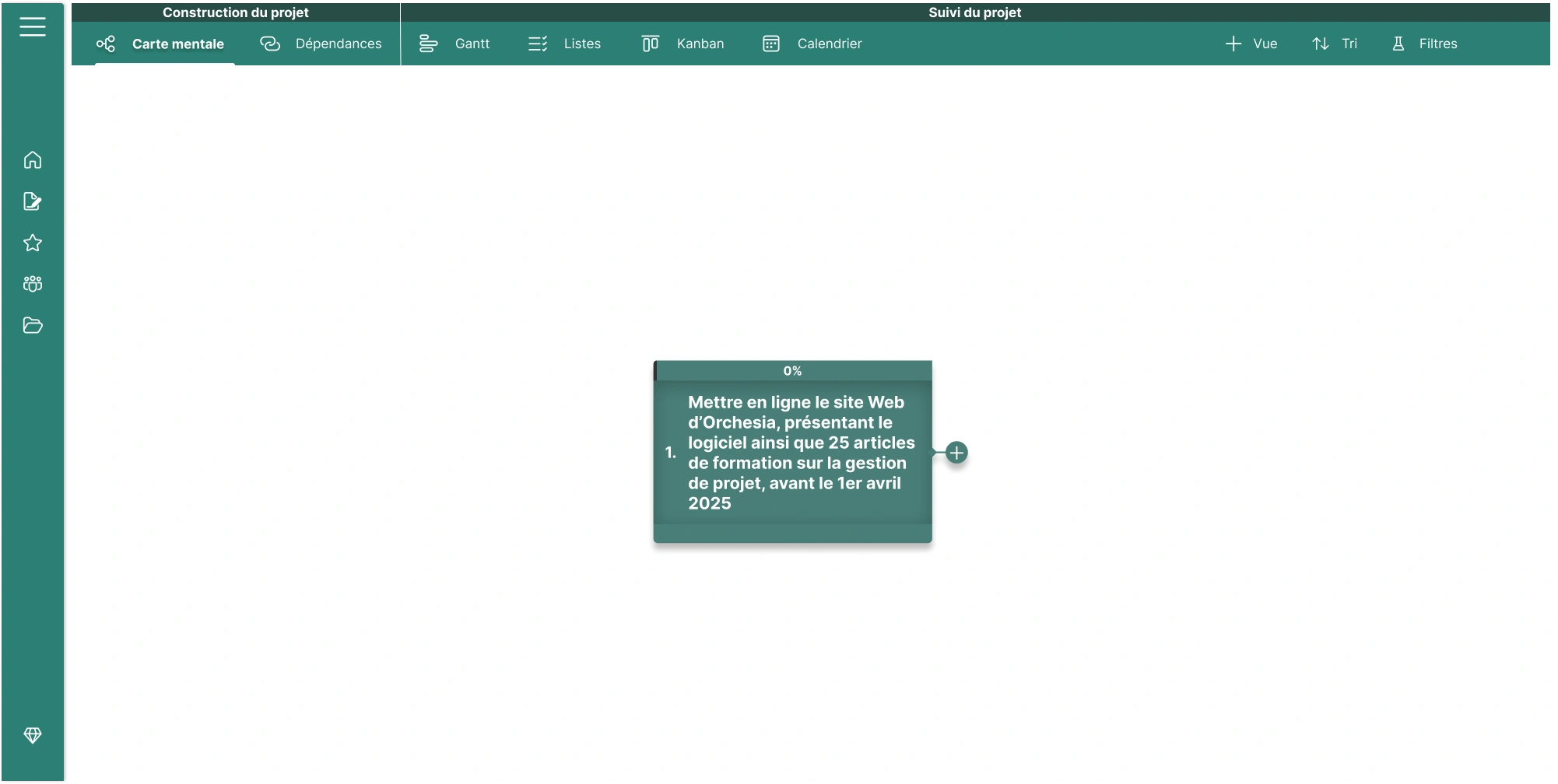
From objective to main deliverables
From the objective, the WBS helps identify the main deliverables. Together they cover 100% of the project scope (a core WBS principle) and are phrased as actionable outcomes:
1.1. Product landing page is live
1.2. Site performance is optimized
1.3. Article pages are live
1.4. On-page SEO is optimized
1.5. Site is hosted on the orchesia.com domain
1.6. Legal pages (GDPR and legal notice) are written
1.7. Project management is tracked, organized, and documented
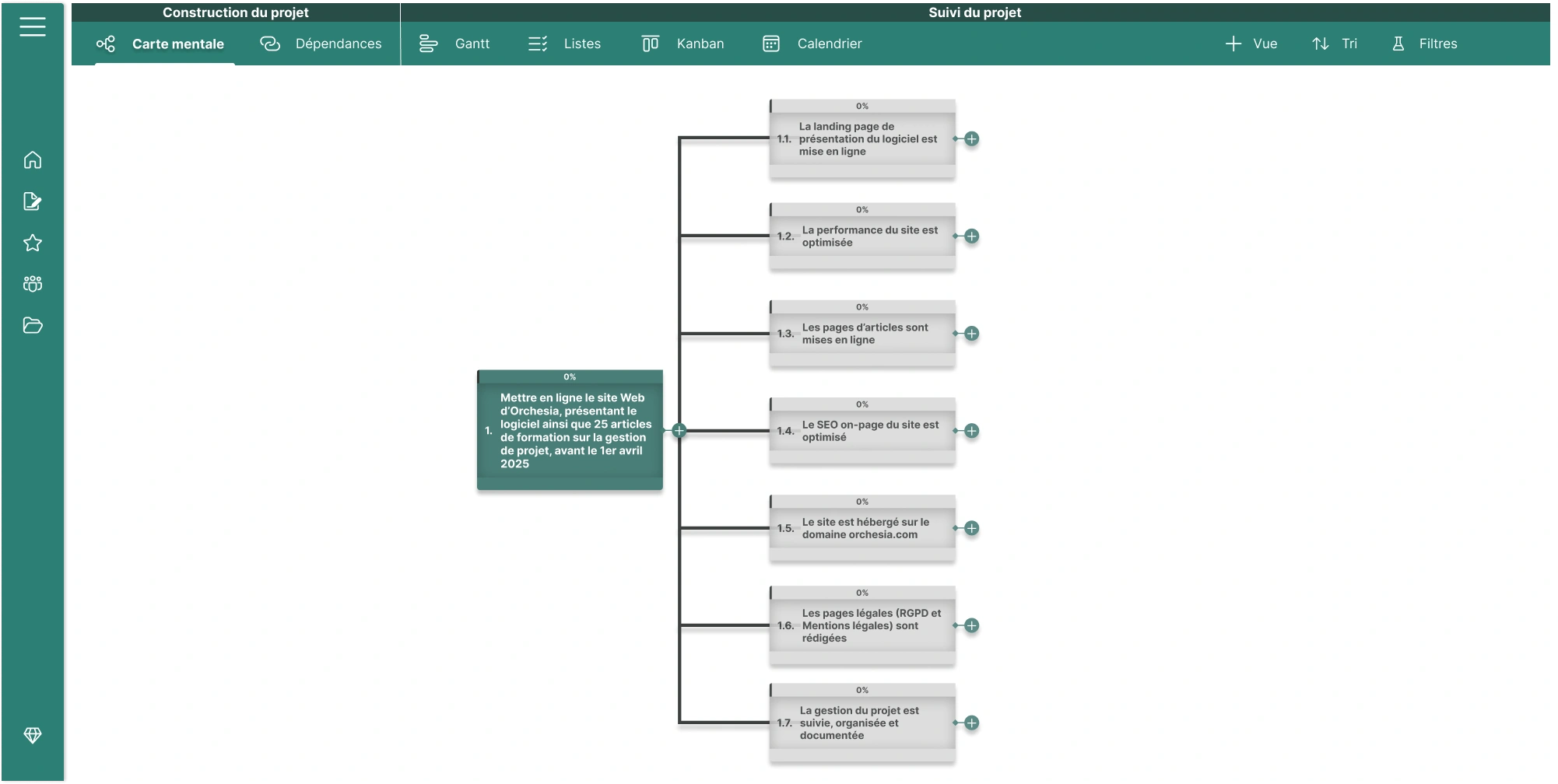
From deliverables to sub-deliverables
This decomposition shows how a WBS turns a global vision into a logical, hierarchical structure, making cost and schedule estimates more reliable.
Each deliverable is then decomposed into sub-deliverables to refine the structure. For example, for “Product landing page”:
1.1.1. Landing page header is created
1.1.2. Landing page footer is created
1.1.3. Product demo videos are edited
1.1.4. Contact form is functional
1.1.5. Informational content is written
1.1.6. Landing page calls-to-action are optimized
1.1.7. Landing page visual identity is defined
The goal is WBS completeness so all project deliverables are covered. Adjustments may occur—projects evolve and must remain adaptable—but a well-defined WBS helps anticipate required resources (time, cost, feasibility) and reduce uncertainty during planning.
We recommend a visual WBS builder such as Orchesia, because a graphical representation simplifies structuring information and understanding relationships between project elements. With a dynamic overview, collaboration improves, creativity is stimulated, and alternative solutions are easier to explore.
Ideally, WBS construction is done collaboratively with subject-matter experts who can identify the essential deliverables to achieve the project objective efficiently.

From sub-deliverables to tasks
The next breakdown level translates expected results into concrete actions. At this stage, WBS items should be phrased with action verbs so each owner knows exactly what to do.
Example for deliverable 1.1.7 — Landing page visual identity:
1.1.7.1. Build the landing page color palette
1.1.7.2. Choose the typefaces
1.1.7.3. Design the Orchesia logo
1.1.7.4. Define the graphic style and iconography
1.1.7.5. Create button and interactive component patterns
This shows how a WBS turns a global vision into a logical hierarchy, enabling better cost and schedule estimates.
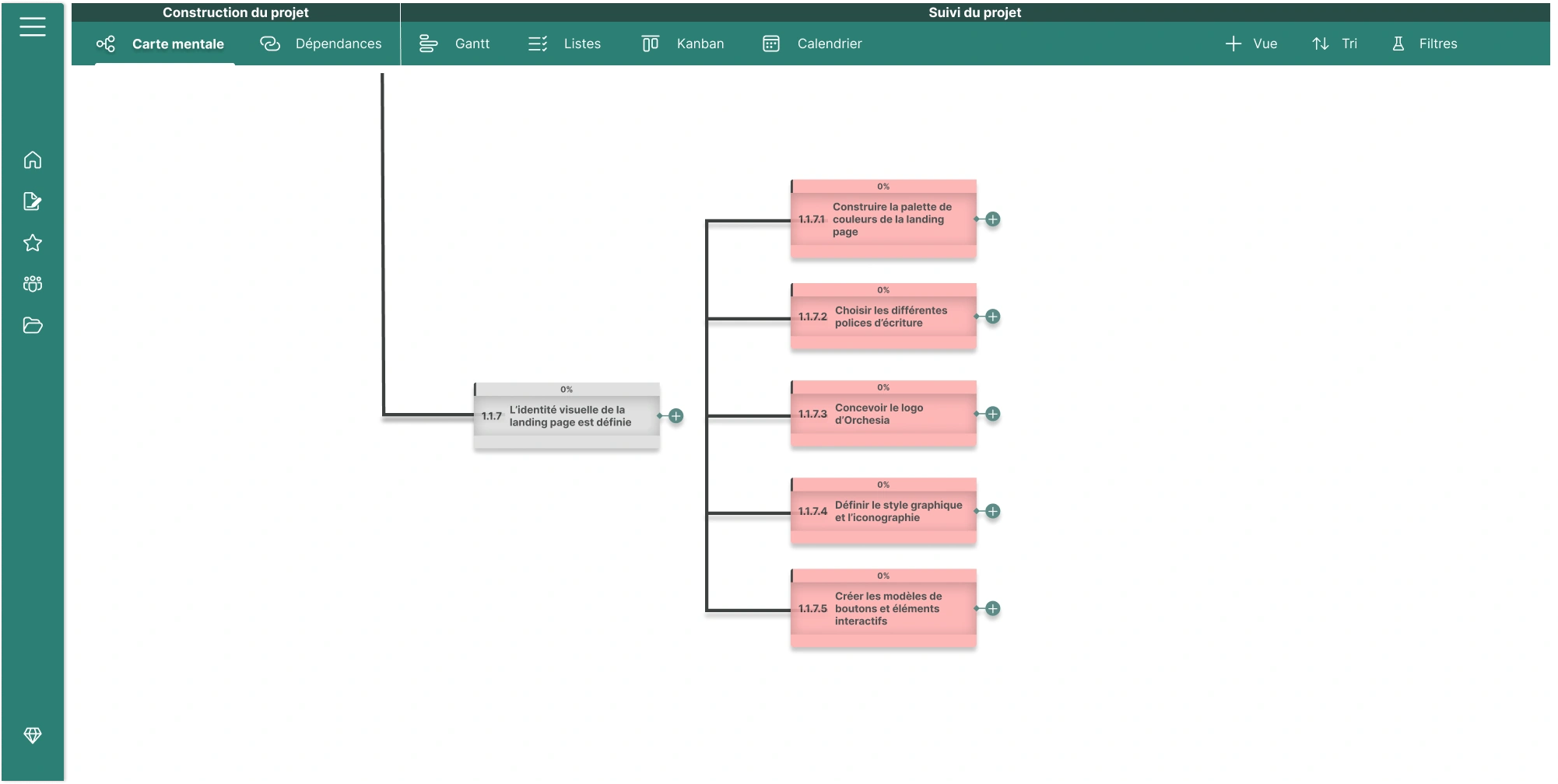
From tasks to elementary tasks
At this level, the WBS turns expected results into actionable work packages. Each item becomes an elementary task with an associated duration, cost, and owner.
- Can I estimate the time required precisely?
- Can I assign a clear owner?
- Can I estimate the cost precisely?
If the answer to all three is yes, the task is elementary and needs no further breakdown. Otherwise, decompose further.
Breaking down task 1.1.7.3 Design the Orchesia logo
1.1.7.3.1. Benchmark and select a graphic designer
1.1.7.3.2. Present Orchesia’s concept, needs, and values to the designer
1.1.7.3.3. Select a logo from the proposals
1.1.7.3.4. Approve and obtain the final logo in all required formats
1.1.7.3.5. Test the logo with a small user panel
For each of these subtasks, you can answer the three questions—so the breakdown is complete. This granularity is what makes the WBS a central planning tool.
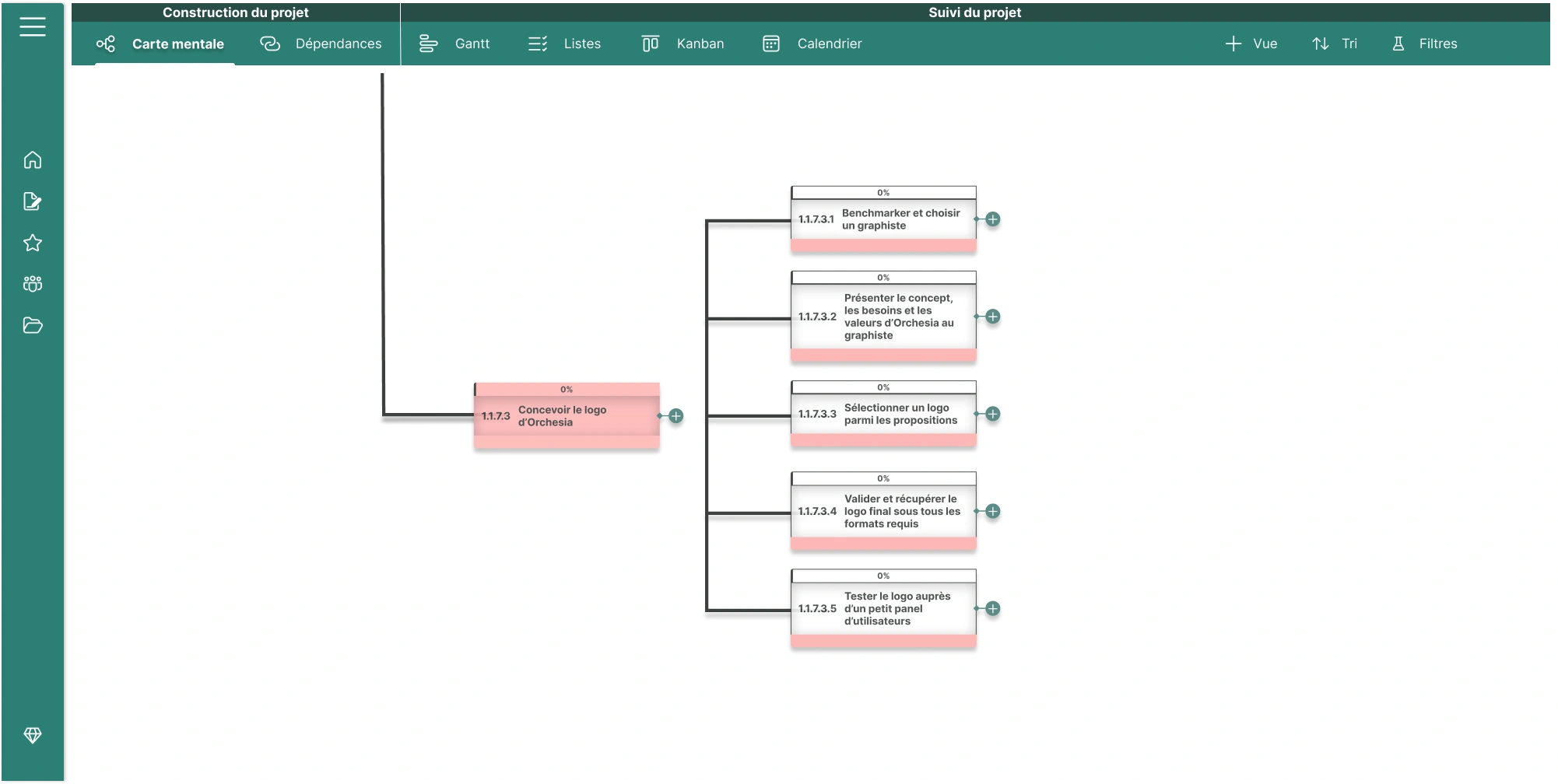
Structuring and finalizing your WBS
Once your WBS is established, capture the essentials for precise tracking: the owner, each item’s name and description, durations, costs, and a measurable criterion to assess progress.
In the Orchesia project management tool, some fields are auto-generated: the parent (node from which children descend), the children, and the item’s unique identifier within the WBS.
This work breakdown is shown with five levels, but depending on size and complexity, three levels (objectives, deliverables, tasks) may be enough. The detail depends on the precision needed for estimating, planning, and tracking.
While the exercise may seem time-consuming, it greatly simplifies team coordination and management. That’s why we built Orchesia, a visual WBS tool that makes project structuring simple, effective, and intuitive.

Orchesia: the software built to structure and create your project WBS
With Orchesia, adopt and integrate the WBS method easily into your projects. Designed to support the visual structuring of your WBS, our tool helps you turn ideas into clear objectives, concrete deliverables, and achievable tasks in just a few clicks.
Show, hide, or expand any branch of your WBS directly from our mind-map interface. Click any elementary task to assign an owner, set its duration, capture its costs, and track its progress.
No more endless WBS spreadsheets in Excel! With Orchesia, make the most of the WBS’s key advantage: a clear, intuitive visualization of your project that removes ambiguity from the start, prevents omissions, and lays solid foundations for success.
Try our project management software Orchesia free for two weeks, no commitment!